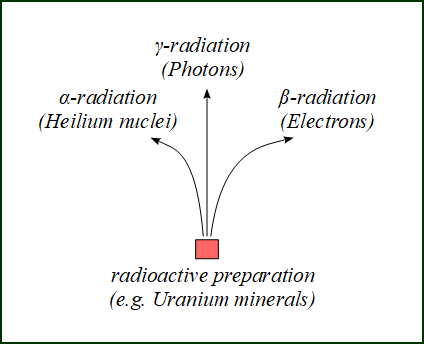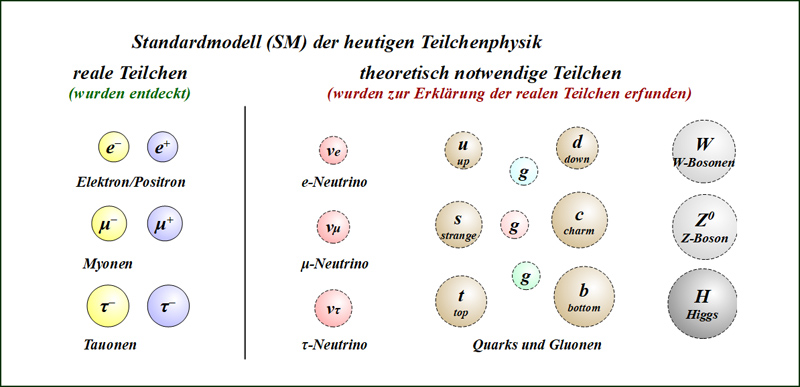Particle Physics - an interesting Science at the Crossroads
The necessity of this website results on the one hand from the fact that the explanations of particle physics are based on unproven particles like 'quarks', but on the other hand the particle variety can only be represented by positrons and electrons.
Particle physics is probably the most interesting branch of physics. It deals with the origin of matter and the laws that shape the universe. Particle physics was born in 1896 with the discovery of radioactivity by Becquerel. Since then, the practical and experimental findings have developed rapidly, but the theoretical explanations have been moving for decades on a level that can be called archaic: Physicists try to explain the diversity of the observed, real particles by introducing additional particles into the particle system for which, in their opinion, there is a 'theoretical necessity'. Such explanatory approaches leave the ground of exact science, which is strictly based on the analysis of facts and verifies their correctness in the synthesis of the gained knowledge.
Natural Radioactivity was the first Source of Particles

The natural radioactive processes provided the first evidence for the existence of particles. The radioactive radiation can be deflected by magnetic and electric fields, provided that the particles are charged. Thus, alpha, beta and gamma radiation could be distinguished. In 1896, atoms were still considered indivisible (atomos - indivisible). The discovery of radioactivity therefore meant that the atoms in turn consisted of even smaller particles. The scientists of that time used these energetic radiations for the exact research of the atomic structure. If the particles penetrate thin metal foils, a part of them is deflected. From this, conclusions can be drawn about the material distribution, charge distribution and size ratios. Atoms are not small massive spheres, but they consist of a positive nucleus and a shell of electrons. The largest part of the atom is empty space.
The Particle Variety in the present Physics
To explain the diversity of the observed real particles, physics has invented additional particles 'at the desk', so to speak. The theories, which led to the invention of additional particles are also the basis for the evaluation of those experiments, with which the theoretical particles are proved. In this way every invented particle was also proved at some time. Only with the proof of the 'quarks' one experienced a fiasco: The 'quarks' should possess third elementary charges. In spite of immense experimental effort never a particle with third elementary charge was found! It must be stated that on the one hand the quark hypothesis has no basis and on the other hand many other particles have been proved in theoretical circuits. In other words, here the dog bites itself constantly into the own tail.
Fig. 1.1: The Standard Model (SM) summarizes the necessary particles according to the current state of knowledge

It is noticeable that the overwhelming number of particles of the standard model was invented 'at the desk'. Evidence for the 'quarks' is so far completely missing and the evidence for all other invented particles is contestable. In the large number of undefined particles, there is always a particle to be found which comes so close to the theoretical-mathematical predictions that it can be proclaimed as the particle we are looking for, without being clear about its real origin and structure. The evidence for the elusive neutrino will be explicitly discussed elsewhere.
Why this Website?
This website is designed since April 2021. It is based on a two-part scientific work on nuclear and particle physics entitled: "The Structures of the Microcosm".
Here a new and consistent picture of particle physics is designed, which is based on analyses of experimental results and facts and avoids conclusions based on theoretical considerations.
The site is in progress and will be extended with this english version. The original website is:
https://physik21.nefys.de/preview.php/Physik_am_Scheideweg.html